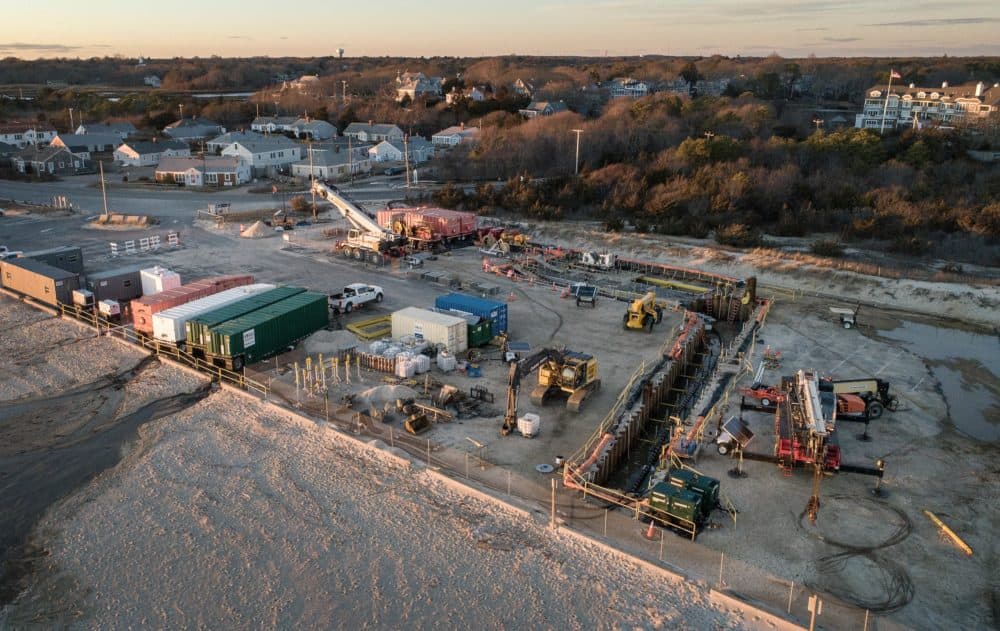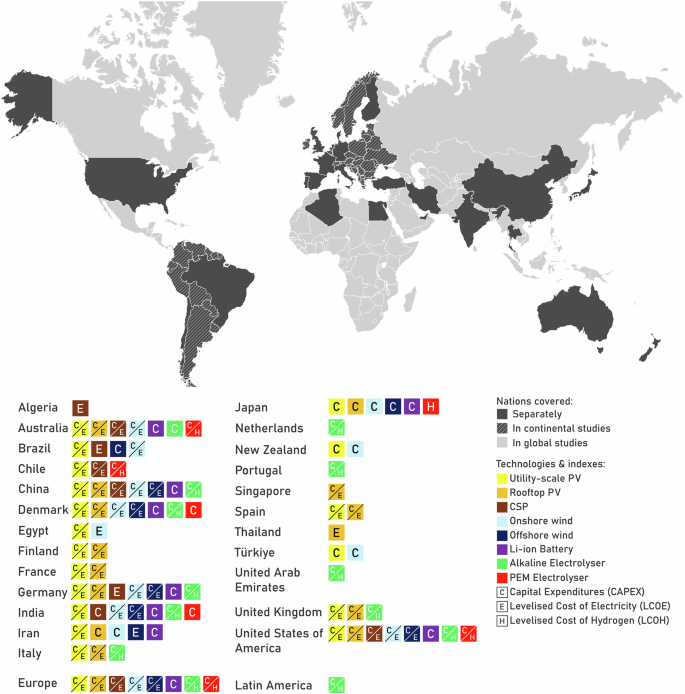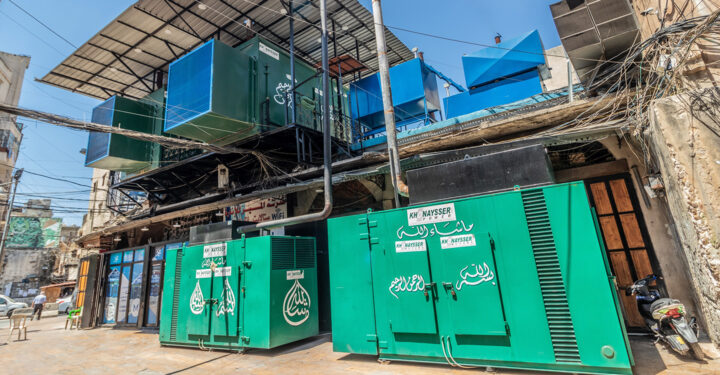Report on the U.S. Offshore Wind Industry’s Contribution to Sustainable Development Goals
Executive Summary
- The United States offshore wind industry, despite facing economic and political challenges, holds significant potential for advancing key Sustainable Development Goals (SDGs).
- This report analyzes the industry’s impact on sustainable development, with a focus on two major New England projects: Vineyard Wind and Revolution Wind.
- The analysis quantifies contributions toward clean energy (SDG 7), climate action (SDG 13), economic growth (SDG 8), and resilient infrastructure (SDG 9).
SDG 7: Affordable and Clean Energy
Projected Energy Demand and Offshore Wind Capacity
- New England’s electricity demand is projected to double by 2050, driven by the electrification of home heating and transportation.
- To meet this demand sustainably, the region is estimated to require 30,000 megawatts (MW) of offshore wind power by mid-century, a capacity equal to the region’s entire existing power generation fleet.
Current Project Contributions to Energy Supply
- Vineyard Wind: 806 MW maximum output from 62 turbines.
- Revolution Wind: 704 MW maximum output from 65 turbines.
- Combined Capacity: The two projects will generate a total of 1,510 MW, sufficient to power approximately 750,000 homes.
- Grid Impact: This combined output represents 4.9% of New England’s total electricity generation capacity, providing a meaningful contribution to regional energy security and reliability.
Operational Performance and Reliability
- Data from the South Fork Wind project demonstrates high reliability for offshore wind technology in the Northeast.
- The project produced electricity over 92% of the time during its first year of operation.
- It achieved an average capacity factor of 46.4%, with peak monthly performance reaching approximately 60%, a level comparable to modern natural gas power plants (59.9%).
SDG 13: Climate Action
Annual Carbon Dioxide Emissions Reduction
- The operation of these wind farms is projected to significantly reduce greenhouse gas emissions by displacing fossil fuel-based power generation.
- Vineyard Wind: Expected to achieve a net reduction of 1.63 million metric tons of CO2 annually, equivalent to removing 325,000 cars from the road.
- Revolution Wind: Expected to achieve a net reduction of 1.38 million metric tons of CO2 annually, equivalent to removing 278,206 cars from the road.
Long-Term Climate Impact
- Over their operational lifespan of 30-35 years, the two projects are projected to prevent over 97 million metric tons of CO2 emissions.
- This cumulative reduction is equivalent to the annual emissions of 22.6 million cars or 254 natural gas-fired power plants.
SDG 8: Decent Work and Economic Growth
Job Creation
- The development of offshore wind projects creates significant employment opportunities in both construction and operations.
- Total Construction Jobs: The two projects have supported a combined total of over 5,500 jobs.
- Vineyard Wind: Approximately 3,500 jobs supported, with 42% being union positions.
- Revolution Wind: Over 2,000 jobs supported, with 50% being union positions.
- Long-Term Operational Jobs: The projects will create permanent, full-time positions for ongoing operations and maintenance.
- Vineyard Wind: 90 full-time jobs.
- Revolution Wind: 32 to 58 full-time jobs.
SDG 9: Industry, Innovation, and Infrastructure
Regional Investment in Offshore Wind Infrastructure
- Southern New England states have made substantial financial commitments to develop the specialized ports, supply chains, and workforce required for a regional offshore wind industry.
- Total Investment: Massachusetts, Connecticut, and Rhode Island have collectively invested over $701 million to build resilient and sustainable energy infrastructure.
State-Specific Investments
- Massachusetts ($390+ million):
- $347 million for infrastructure and ports, including the New Bedford Marine Commerce Terminal and a turbine testing facility in Charlestown.
- $20.5 million for job training programs.
- $5.6 million for local supply chain development.
- $17 million for industry-related science and research.
- Connecticut ($211 million):
- Funds contributed to the redevelopment of the State Pier in New London to create a critical staging ground for offshore wind projects.
- Rhode Island ($100+ million):
- Investment in various offshore wind-related initiatives to support industrial growth and innovation.
Analysis of Sustainable Development Goals in the Article
1. Which SDGs are addressed or connected to the issues highlighted in the article?
-
SDG 7: Affordable and Clean Energy
- The article’s central theme is the development of offshore wind power, a form of clean and renewable energy. It discusses the generation capacity of new projects (1,510 megawatts), the region’s future energy needs (30,000 megawatts by mid-century), and the role of wind power in the energy grid (4.9% of regional capacity from two projects). This directly relates to ensuring access to affordable, reliable, sustainable, and modern energy.
-
SDG 8: Decent Work and Economic Growth
- The article highlights the economic impact of the offshore wind industry, including significant job creation. It specifies that the two main projects have created 5,500 jobs, with a portion designated for union workers. It also details the long-term employment opportunities, albeit smaller, that will be sustained by these projects. This connects to promoting sustained, inclusive, and sustainable economic growth and productive employment.
-
SDG 9: Industry, Innovation, and Infrastructure
- The development of the offshore wind industry requires substantial investment in new and specialized infrastructure. The article details the $701 million invested by Massachusetts, Connecticut, and Rhode Island to build specialized ports (like the New Bedford Marine Commerce Terminal), job training programs, and supply chains. This aligns with building resilient infrastructure and fostering sustainable industrialization.
-
SDG 13: Climate Action
- A primary benefit of offshore wind power discussed in the article is its role in combating climate change. It quantifies the climate impact by stating that the two projects are expected to avoid 3 million metric tons of carbon dioxide emissions annually. This is a direct measure to combat climate change and its impacts by transitioning away from fossil fuels.
2. What specific targets under those SDGs can be identified based on the article’s content?
-
Target 7.2: Increase substantially the share of renewable energy in the global energy mix.
- The article directly addresses this target by discussing the planned increase in offshore wind power. It states that two projects alone will add 1,510 megawatts, representing 4.9% of New England’s electricity generation capacity. Furthermore, it notes that Massachusetts expects offshore wind to provide over 50% of the state’s power needs by 2050, demonstrating a substantial increase in the renewable energy share.
-
Target 8.2: Achieve higher levels of economic productivity through diversification, technological upgrading and innovation.
- The article describes the creation of a new, high-tech industry for the region. The investment in specialized ports, turbine testing facilities, and a local supply chain represents a move towards economic diversification and technological upgrading in the energy sector.
-
Target 9.1: Develop quality, reliable, sustainable and resilient infrastructure… to support economic development.
- The article details the $701 million invested by three states to build the necessary infrastructure for the offshore wind industry. This includes the construction of the New Bedford Marine Commerce Terminal, the redevelopment of State Pier in New London, and upgrades to shipyard and port infrastructure, all of which are critical for supporting this new economic sector.
-
Target 13.2: Integrate climate change measures into national policies, strategies and planning.
- The states’ strategic planning and massive financial investment in offshore wind, as detailed in the article, are clear examples of integrating climate change measures into regional and state-level policy. The goal of using this carbon-free power to meet climate goals shows a direct implementation of this target.
3. Are there any indicators mentioned or implied in the article that can be used to measure progress towards the identified targets?
-
For Target 7.2 (Renewable Energy Share):
- Indicator: Renewable energy share in the total final energy consumption.
- The article provides specific data points: 1,510 megawatts of new capacity from Vineyard Wind and Revolution Wind, representing 4.9% of the region’s total capacity. It also mentions a long-term goal of 30,000 megawatts of offshore wind power by mid-century.
- Indicator: Renewable energy share in the total final energy consumption.
-
For Target 8.2 (Economic Productivity and Jobs):
- Indicator: Jobs created in the renewable energy sector.
- The article quantifies job creation, stating that 5,500 jobs have been supported by the two main projects. It also specifies the number of long-term positions (90 for Vineyard Wind, 32-58 for Revolution Wind).
- Indicator: Jobs created in the renewable energy sector.
-
For Target 9.1 (Infrastructure Investment):
- Indicator: Total investment in sustainable infrastructure.
- The article provides precise financial figures for infrastructure investment: a total of $701 million from Massachusetts, Connecticut, and Rhode Island. It breaks down Massachusetts’ spending, noting $347 million on infrastructure and ports.
- Indicator: Total investment in sustainable infrastructure.
-
For Target 13.2 (Climate Action Integration):
- Indicator: Reduction in greenhouse gas emissions.
- The article explicitly states the expected emissions reduction: a combined 3 million metric tons of carbon dioxide avoided annually, which is equivalent to taking over 600,000 cars off the road.
- Indicator: Reduction in greenhouse gas emissions.
4. SDGs, Targets, and Indicators Table
| SDGs | Targets | Indicators |
|---|---|---|
| SDG 7: Affordable and Clean Energy | 7.2: Increase substantially the share of renewable energy in the global energy mix. |
|
| SDG 8: Decent Work and Economic Growth | 8.2: Achieve higher levels of economic productivity through diversification, technological upgrading and innovation. |
|
| SDG 9: Industry, Innovation, and Infrastructure | 9.1: Develop quality, reliable, sustainable and resilient infrastructure to support economic development. |
|
| SDG 13: Climate Action | 13.2: Integrate climate change measures into national policies, strategies and planning. |
|
Source: wbur.org







